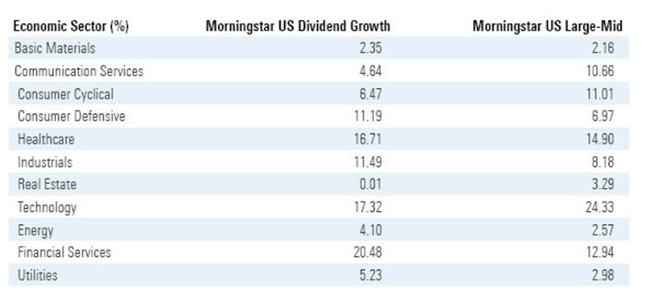
Equity income investors have not had it easy in 2020. The pandemic-driven economic downturn has prompted many companies to reduce, suspend, or eliminate regular payouts to shareholders.
Perhaps most shocking was Royal Dutch Shell (RDS.A), which lowered its dividend for the first time since World War II. But it was far from the only big name whose falling profits prompted a dividend cut: from Disney (DIS), Boeing (BOE), and Carnival (CCL) in the US, to European stalwarts like UBS (UBS), adidas (ADS), and BT Group (BT.A), to three of Australia’s big four banks. Dividend suspensions have even been mandated by some regulators.
What’s a dividend investor to do in this year of the falling shareholder payout? Take a breath and look beyond the headlines. According to analysis by Alec Lucas of Morningstar Manager Research, dividend cuts in the US have been concentrated in the consumer cyclical sector, oil and gas-related businesses, and small-cap stocks.
The many companies that have maintained and even grown their shareholder payouts don’t make the news. And even if high-fliers like Zoom (ZM) and Tesla (TSLA) don’t pay dividends, there’s still plenty of income to be had in today’s equity markets.
Morningstar’s dividend growth indices highlight companies that are not only paying dividends but whose track record of raising their payouts is likely to persist. When the Morningstar US Dividend Growth Index and Morningstar ex-US Dividend Growth Indexes rebalanced in late June 2020, they removed some dividend laggards and added to healthier payers. Examining the indexes’ positioning shines a light on stable, even rising, dividend streams still available to investors.
Where to Look for Dividend Growth
Dividend growth investing is not about maximising current income. Rather than seek the market’s juiciest yields, dividend growth investors home in on companies whose consistent cash flows have allowed them to improve their shareholder payouts. Dividend growth not only helps investors keep pace with inflation, but it signals strengthening corporate fundamentals. Companies that increase payouts to shareholders also tend to be competitively well-positioned.
The Morningstar US Dividend Growth Index and the Morningstar Global ex-US Dividend Growth Indexes screen for companies that have increased their payouts for five years and are poised for continued growth. Five years isn’t as long a history as some require, but the emphasis is more on the future than the past. After all, Shell’s decades-long track record foretold nothing this year.
The indices exclude constituents paying out more than 75% of their earnings in dividends, so they have scope to maintain and grow their payout. They also avoid stocks whose yields are in the top 10% of the market as a means of screening out dividend traps, while selecting companies with positive earnings outlooks. Companies that indicate dividend suspensions can be eliminated at quarterly rebalancing.
At the June 2020 rebalancing, the Morningstar US Dividend Growth Index removed 27 constituents due to dividend suspensions, and the Morningstar Global ex-US Dividend Growth Index eliminated 12.
Unsurprisingly, constituents in the consumer cyclical sector were most affected, as shown below. Pandemic-related shutdowns and the economic slowdown have crushed discretionary retail, as well as airlines and other travel-related businesses. Basic materials-oriented companies have suffered from falling demand, though dividend payers throughout the economy have been affected.
Stocks ejected from the US index, for example, include travel stocks such as hotel group Marriott International (MAR), online booking portal Expedia (EXPE) and Delta Air Lines (DAL). Out of the non-US index went Finnish automation firm Valmet (VALMT), Swedish sensor specialist Hexagon (HXGC), and German company Henkel (HEN), which is behind household brands such as Jeyes Fluid and Rightguard.
Still, the vast majority of the Morningstar US Dividend Growth’s 478 constituents and the Morningstar ex-US Dividend Growth Index’s 721 constituents met payout requirements and remained in the indices. Turnover in June was higher than average for the past five years but far from extreme. Below is a list of the stocks which were ejected from the ex-US index in the latest shake-up.

Where is the Index Investing for Growth?
Both the US and ex-US indices dedicate above-market weight to the financial services industry including banks like JPMorgan (JPM) and Royal Bank of Canada (RY), to payments companies Visa (V) and Mastercard (MA). Both indices are also overweight consumer defensive stocks: Procter & Gamble (PG), Coca-Cola (KO), and Costco (COST) in the US, and Nestle (NESN), Danone (BN), and Kao (KAO) globally.
The indices are underweight consumer cyclicals stocks and, while the growth-oriented technology sector the indices still feature the likes of Microsoft (MSFT), Cisco (CSCO), Apple (AAPL), and Intel (INTC) in the US, and Taiwan Semiconductor (TSM), ASML Holding (ASML), and Infosys (INFY) globally.
Healthcare, also a growth-leaning sector, consumes above-market weight for both indices. That’s especially driven by drug manufacturers like Pfizer (PFE), Bristol-Myers Squibb (BMY), Novartis (NVS), and Sanofi (SNYNF). While telecoms is a mutual underweight, industrials like 3M (MMM), Honeywell (HON), and Vinci (VCISF) are important to both indices.

It’s no coincidence that all the companies named above have economic moats around their businesses, in the view of Morningstar Equity Research. Companies with sustainable competitive advantages are well-positioned to grow their dividends.
Many income-seeking investors are being pushed into equity markets because rock-bottom interest rates mean paltry yields on cash and bonds. Dividend growth stocks may not offer the highest yields on the market, but they do throw off an above-average income stream. As shown below, both indices have produced a superior yield to the market over the past year.
The Morningstar US Dividend Growth Index, for example, yields 2.94% compared to 1.81% for the US Large-Mid Cap Index. The Morningstar Global ex-US Dividend Growth Index yields 3.39% compared to the Global ex-US Large-Mid Growth Index's 2.91%.
Critically, this income stream does not come at the expense of quality and ultimately, an investment’s long-term total return. Equity income investors can get burned reaching for high-yielders, only to find themselves holding shares of a company in financial distress. Dividend cuts may be painful, but they’re not as bad as the permanent impairment of capital. Especially during economic downturns, the dividend landscape is best navigated selectively.




























